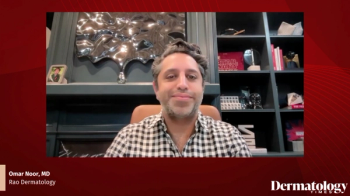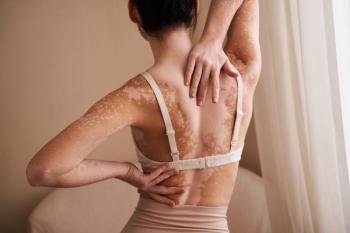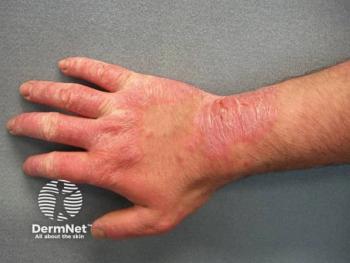
Recognizing Topical Steroid Withdrawal and Advancing Therapeutic Precision
Key Takeaways
- TSW is frequently misdiagnosed due to its clinical resemblance to severe AD flares, necessitating a thorough clinical history for accurate diagnosis.
- Inconsistent corticosteroid use, often due to "steroid phobia," is a major contributor to TSW, highlighting the need for targeted therapeutic approaches.
At RAD 2025, Brad Glick, DO, MPH, reviewed the clinical signs of topical steroid withdrawal, the need for detailed patient histories to distinguish it from severe AD flares, and the role of targeted non-steroidal and systemic therapies.
“We need to be on the lookout for topical steroid withdrawal. As my colleague Peter Lio always says, it's sometimes very difficult to differentiate it from a really bad flare of atopic dermatitis, but you have to take a step back. You have to get a really good history. You have to talk about whether patients are following the instructions with the use of topical corticosteroids,” said Brad Glick, DO, MPH, in an interview with Dermatology Times.
Glick, a practicing dermatologist at Glick Skin Institute, director of the Dermatology Residency at the Larkin Health System Palm Springs Campus, and clinical assistant professor of dermatology at the FIU Herbert Wertheim College of Medicine in Miami, Florida, highlighted the clinical challenges and therapeutic considerations surrounding topical steroid withdrawal (TSW), as well as future directions in inflammatory skin disease research at the
Glick reviewed the importance of recognizing TSW, a condition often overlooked or misdiagnosed due to its clinical resemblance to severe atopic dermatitis (AD) flares. TSW typically manifests 2 to 4 weeks following chronic topical corticosteroid use, though it can occur sooner. Hallmark signs include widespread erythema, the “elephant skin” texture localized to the lower extremities, and the characteristic “red sleeve sign”—a sharp demarcation of erythema at the wrists or ankles. He noted the lack of formal diagnostic criteria and the frequent diagnostic overlap with AD, stressing the importance of a thorough clinical history.2
A major contributor to TSW, according to Glick, is the phenomenon of “steroid phobia” and inconsistent corticosteroid use, where patients either underuse or over-rely on these therapies due to past treatment limitations. Today, he said, clinicians must pivot toward more targeted approaches, especially when suspecting TSW. He highlighted the utility of newer non-steroidal topicals and systemic options, particularly the biologics: dupilumab, tralokinumab, lebrikizumab, and the JAK inhibitors abrocitinib and upadacitinib. These agents may effectively address what Glick described as the “cytokine storm” driving the inflammatory phenotype in TSW.
Looking ahead in dermatology, Glick expressed optimism for research in hidradenitis suppurativa (HS), calling it a new frontier in inflammatory skin disease therapeutics. With HS still underdiagnosed and undertreated, he sees promise in the expanding pipeline of targeted agents.
Lastly, Glick discussed the value of disease-specific meetings such as RAD. He noted that while the diagnosis of AD is typically well understood in clinical practice, nuanced discussion around tailoring therapeutics to individual patient profiles is increasingly essential. RAD’s emphasis on evolving evidence, therapeutic algorithms, and complex comorbidities enhances clinician confidence in navigating these multifactorial disease states.
References
- Dasilva D, Glick B, Lio P. Understanding topical steroid withdrawal (TSW) in patients with atopic dermatitis (AD). Presented at: 2025 Revolutionizing Atopic Dermatitis; June 6-7, 2025; Nashville, TN
- Mohta A, Sathe NC. Topical steroid withdrawal (red skin syndrome). In: StatPearls. StatPearls Publishing; 2025. Accessed June 8, 2025.
https://www.ncbi.nlm.nih.gov/books/NBK603718/
Newsletter
Like what you’re reading? Subscribe to Dermatology Times for weekly updates on therapies, innovations, and real-world practice tips.



















